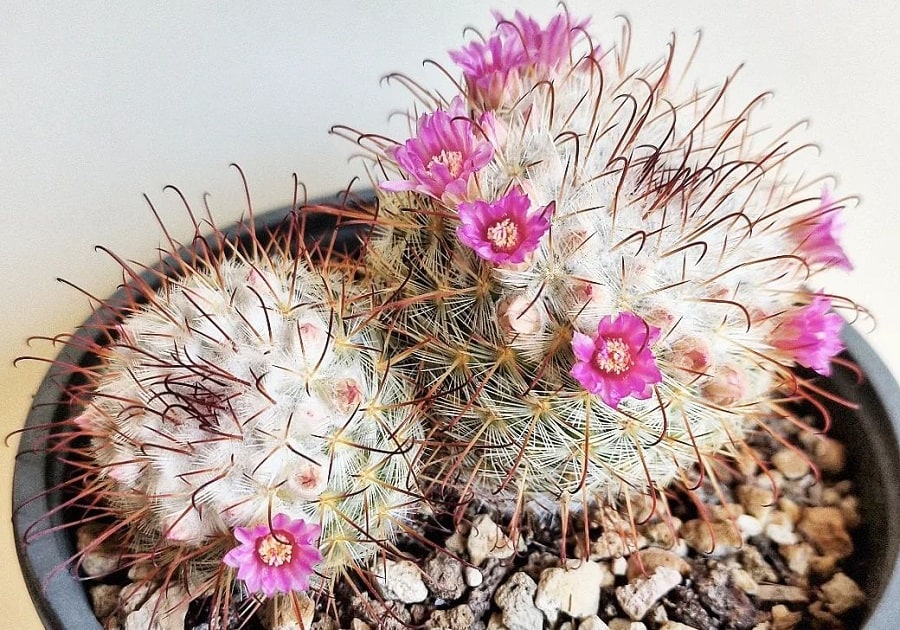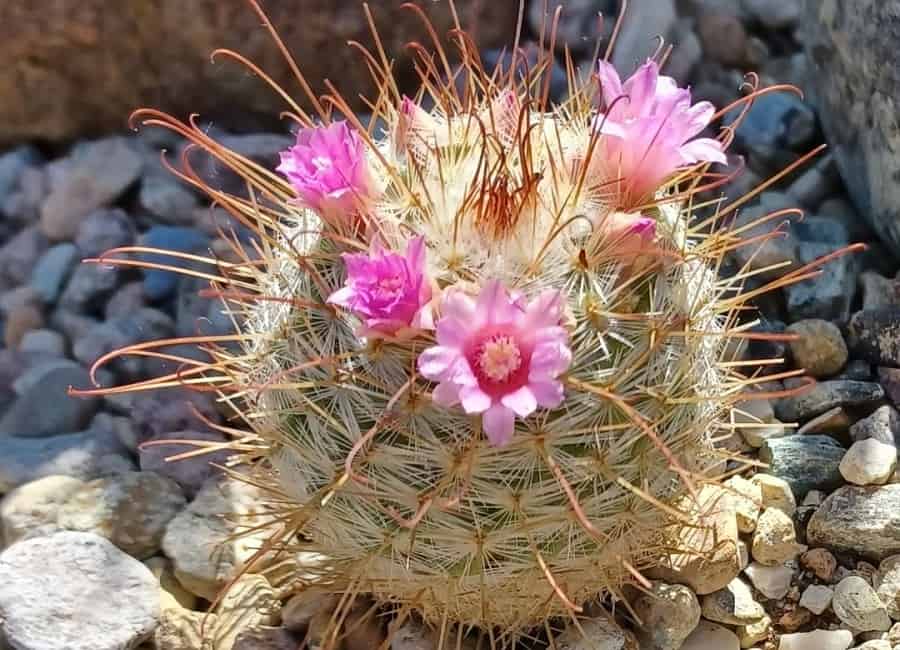Mammillaria bombycina: Characteristics and Care
Are your cactus care skills worthy of the spiky challenge? Keeping that cute little Mammillaria bombycina (silken pincushion cactus) alive is trickier than you think! Make one wrong move, and you’ll be stuck with a sad, withered plant buddy. But don’t panic – we’re here with a lifeline of tips to rescue your cactus parenting game. Buckle up and get ready to swerve those killer mistakes!

Contents
About Mammillaria bombycina
This petite cactus, native to Mexico, is top-notch eye candy with its fuzzy white tufts and cocoa-brown spines. Pretty pink flowers bloom in warm months too. Despite its cuddly looks, the silken pincushion has a feisty side – over-loving it can spell disaster! That’s why we need to study up on the common blunders that’ll harsh this cactus’s mellow.
Related Post:
39 Mammillaria Cactus Types and Care [With Pictures]
Soil Slip-Ups to Sidestep
Steer clear of compact, moisture-hogging soils without drainage. Your Mammillaria will drown and rot in that mucky misery! The perfect cactus medium is a breathable blend of:
- Potting soil
- Coarse sand (around 1/3 of the mix)
- Perlite or small pebbles (1/4 of the mix)
This grainy, fast-draining blend gives those roots the oxygen they crave.
Container Conundrums to Conquer
Cramming your cactus into a tiny pot is cruel! It needs a roomy casa to stretch out. Pot size should be around 2-4 inches wider than the cactus body. And make sure that baby has a drainage hole at the bottom to avoid getting its feet wet.
Every 2-3 years, graduate your stocky pal to a slightly bigger pot, gently. This allows for uninterrupted growth without getting rootbound and cranky.
Watering Wipeouts to Waylay
Drenching your cactus is a surefire way to encourage rot and fungus. Only water when the soil is bone dry, about every 2-3 weeks in summer. Give just enough to moisten the soil, letting any excess drain out.
In winter, put down the watering can! Mammillaria goes dormant during these chilly months, so overwatering will make it vulnerable to disease.
Light Deficiency Disasters to Dodge
A cactus this furry needs lots of sunshine to thrive! Your prickly darling should get at least 6-8 hours of direct sunlight daily. An ultra-bright windowsill or sunroom works great for indoor plants.
If you can’t provide sufficient natural light, using a grow light setup is a game-changer. Place your Mammillaria about 6-12 inches below the bright grow bulbs for 12-16 hours per day.
But don’t sun-shock it by exposing it to intense rays or grow lights without gradually building up tolerance. Take it slow and increase light in small intervals over a couple weeks to avoid scorching those delicate spines and tufts.

Temperature Meltdowns to Minimize
Heat around 75-85°F keeps a Mammillaria bombycina energized! Protect it from frosty nights below 50°F though, as the cold can kill its roots.
Find creative ways to provide that cozy, summer-like warmth it craves. A heat mat, grow lights, or baking in a sunny spot work wonders.”
Fertilizer Fiascos to Forestall
Mammillaria like a balanced, water-soluble fertilizer feed every 2-4 weeks in spring and summer. But not any old brew! Look for a cactus-friendly formula low in nitrogen and high in phosphorus.
And for Pete’s sake, cut off the buffet completely from fall to late winter when it’s dormant. Trying to push growth at this sleepy time can stress it out.

Pest and Fungus Freak-Outs to Fend Off
These spiky buddies can fall victim to tiny terrorist invaders – pests and fungal diseases. Keep your guard up against these menaces!
Pests like mealybugs, spider mites and scale can spread like wildfire from plant to plant. Inspect your Mammillaria regularly, quarantining any infested ones. Blast bugs away with a steady stream of water or wipe them off with a cotton ball soaked in isopropyl alcohol.
Fungal infections and rot are usually caused by humid, wet conditions. Avoid killing your cactus with kindness by allowing the soil to dry completely between waterings. Proper drainage is crucial too.
At the first sign of discoloration or mushy spots, act fast! Carefully cut away any rotten sections with a clean blade. Then let the remaining cactus dry out before replanting in fresh, sterile soil.
